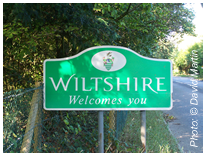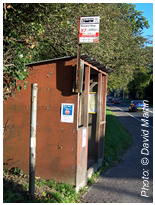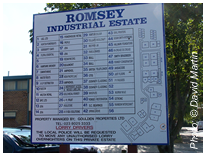The Spatial Nature of Social Science Data
The social sciences deal with many objects of study including individuals, families, households, jobs,
events, organizations, journeys and networks. It is entirely possible to meaningfully study these
phenomena aspatially - for example examining the relationships between individuals within a household -
without any regard for their geographical location. However it is important to recognise that each of
these phenomena is geographically situated: it has a spatial location. If we are able to record these
locations then it becomes possible to undertake explicitly spatial analyses (for example to explore the
way in which family structure varies in different neighbourhoods) or to use location as a means of
linking otherwise disconnected data (for example to identify the local unemployment rate at the place of
residence of each survey respondent). The spatial nature of social science data opens up potential
avenues for research which are not possible if these data are treated aspatially, but it is necessary to
understand the ways in which social science phenomena may be associated with spatial locations. The
social sciences differ in important ways from the physical sciences where the spatial location of the
object of study, such as a coastline or landfill site, can be directly surveyed in the form of a spatial
coordinates. Georeferencing (short for geographical referencing) in the social sciences is usually
indirect, by reference to some intermediate geography such as an address, postcode or administrative
area.
Common Geographical Addresses
|
The first category of geographical references is that which relates to individual addresses.
These include the residential or work addresses of survey respondents, the addresses of
workplaces or other organizations and the addresses of locations at which events take place
– for example shops and hospitals where services are delivered. Postal addresses such
as ’23 Acacia Avenue, Coketown’ are widely used in common language and it is
generally possible to assign spatial locations in the form of spatial coordinates either
directly or via postal codes by matching published directories of locations.
|
 |
 |
A second major group of geographical references is that which relates to areas. These may be
areas used for administrative, electoral or statistical purposes such as ‘ County of
Wiltshire’. Sometimes these areas are used because no more precise location is known
but more often because data at the individual level have been deliberately aggregated in
order to preserve the confidentiality of census or survey respondents. A particular
challenge with areal unit names is that their use in common language may not correspond
exactly with their formal definition in administrative or statistical terms. Thus ‘London’
may be used to refer to built-up area, a collection of administrative boroughs, the area
within an orbital motorway or an ill-defined urban area associated with particular
landmarks. These may all be of interest to an urban sociologist although some will be more
meaningful than others in terms of the lives of London residents. Geographical areas are
formally defined by a descriptor (a textual name or alphanumerical code) and a set of
boundary locations.
|
|
A third category of phenomena are those which are best described as linear features
connecting two or more locations: examples include roads and paths, journeys to work or
migration routes. More subtle examples include flows of commodities or communications links
such as telephone calls. In common language these phenomena may be given identifiers such as
'the X7 bus route' or may be defined only by their start and end points such as a pair of
home and work addresses.
|
 |
 |
Many social science phenomena do not fit neatly into the above categories because they take
place at spatial locations which are not readily described by indirect referencing systems
such as addresses or areas. An example would be a theft from a car parked on the edge of a
wood. This event may be one of a series of objects of criminological study which display
interesting geographical patterns but which cannot be described except by complex textual
description and for which it is not possible to identify specific grid references after the
event. Other examples might include road accidents or environmental quality. In the latter
case neighbourhoods will display different aesthetic characteristics potentially affecting
quality of life, but which cannot be assigned to exact spatial coordinates.
|
|
A further category of phenomena to which it can be challenging to assign appropriate spatial
locations is those which have multiple (or mobile) locations or can be recognised at
multiple geographical scales. For example, the identity of a major retail chain and location
of its registered office will not be an appropriate spatial reference for the place of
employment of its many employees who work in local branches or routinely travel between
sites. In these special cases, the most appropriate spatial location to be captured will
depend on the specific purpose for which the researcher needs the information: the
employment researcher and the business analyst may decide to treat this information in quite
different ways.
|
 |
 Geographical Referencing Learning Resources
Geographical Referencing Learning Resources